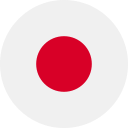to carefully cut apart the body or one of its parts to display internal structures for scientific examination or instruction

解剖する, 注意深く分析する
the act of cutting apart or separation of tissues, organs, etc. during anatomical study or investigation

解剖, 切断
(astronomy) a secondary circular orbit embedded within a primary circular orbit

エピサイクル, 二次円軌道
a curve created by tracing the path of a point on a small rolling circle as it revolves around the edge of a larger circle

エピサイクロイド, エピサイクロイド曲線
to cause a bruise or injury to the body, typically by blunt force or impact

打撲する, 傷つける
a bruise caused by blunt force trauma without piercing the skin

打撲, 挫傷
to oversee or manage a process or operation, especially in an administrative or executive role

監督する, 管理する
of the highest or best kind possible within a field or industry

最上級の, 優れた
over and above what is required or expected

余分な, 過剰な
to take something or someone's position or place, particularly due to being more effective or up-to-date

取って代わる, 置き換える
to occur as an additional or unexpected development following something else

生じる, 起こる
to grant permission or approval for someone to possess or have something

与える, 許可する
relating to or occurring once every hundred years

百年祭の, 百年に一度の
a professional soldier in the Roman army who commanded 100 men

百人隊長, ローマ軍の将校
the collective body or masses of people inhabiting a particular locality or jurisdiction

人口, 民衆
having a large number of inhabitants relative to its size or area

人口の多い, 混雑した
the number of people who live in a particular city or country

人口
a metric unit equal to 1/100th of a liter

センチリットル
| SAT 語彙スキル 2 |
|---|
